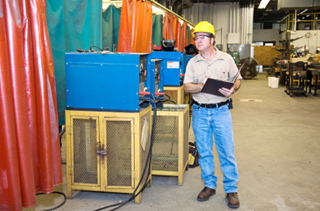Your cart is currently empty!
Lean Six Sigma Improvement and Work Design, Part 11
This is the eleventh post in a series taken from a lesson in Pyzdek Institute Lean Six Sigma Black Belt training. Future posts will continue the topic. You can find all of the articles in the series by searching this site for the title.
Shine

Shine can be thought of as the Lean Six Sigma version of housekeeping. It involves making sure that dirt, grease, and grime is eliminated from the work place. The goal is to make the workplace a safe and pleasant place to work. Shine also assures that items and equipment will be ready to use when needed. Shine is an ongoing activity, not a once-in-a-while “spring cleaning” type of event.
Cleaning and inspection go hand-in-hand. When you clean an area you automatically inspect the working surfaces, floor, equipment, parts, etc. that you are cleaning. This is a side-benefit of cleaning because it highlights issues and opportunities that would otherwise be overlooked. To get the full benefit from this you will need to incorporate a method for easily reporting any problems discovered.
Shine Steps
- Identify the shine targets. What warehouse items (parts, raw materials, subassemblies, etc.,) equipment (machines, tools, worktables, desks and chairs, etc.,) and spaces (floors, work areas, beams, windows, shelves, lights, etc.) will be cleaned?
- Assign responsibilities. Use the 5S map to create specific areas that will be assigned to individuals. Set up and post a schedule showing when each area is to be cleaned. Be sure that shine activities take place throughout each day.
- Determine the shine methods. Start and end each shift with a shine inspection. Determine what will be cleaned and how it will be cleaned, including the cleaning supplies and equipment needed. Implement the “5-minute shine” drill. You will be surprised at how much can be done in an intense 5-minute effort. Develop standard cleaning procedures that assure that time is spent on actual cleaning rather than on preparation for the task.
- Tools. Apply the Set In Order approach to your cleaning tools, thereby making them easy to find and easy to use.
- Shine! Now it’s time to get to work on the targets. Have the responsible people follow the shine procedures and, using the proper tools, clean the work area to the required standards.
- Deal with issues identified during cleaning. Finally, respond to any problems found during the shine process. When possible, fix things immediately. The standard cleaning procedure should include what steps to take to deal with problems that can’t be fixed at once. To whom should they be reported? What forms, etc. are needed? It is a good idea to attach a tag to any equipment where maintenance has been requested to remind workers and supervisors that maintenance is pending.

Leave a Reply